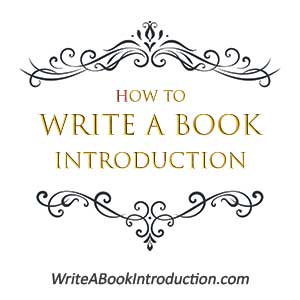How Do You Write An Introduction to a Book?
 This article about how to write a book introduction explores the key components of a book introduction, as well as steps to write a book introduction. It also includes answers to the most important questions about writing book introductions, and common mistakes to avoid. This article is part of a series about how to write a book introduction, written by a former literary agent who’s helped 400+ authors get literary agents and/or traditional publishers.
This article about how to write a book introduction explores the key components of a book introduction, as well as steps to write a book introduction. It also includes answers to the most important questions about writing book introductions, and common mistakes to avoid. This article is part of a series about how to write a book introduction, written by a former literary agent who’s helped 400+ authors get literary agents and/or traditional publishers.
How to Write a Book Introduction - FAQ
What Is a Book Introduction?
A book introduction is a section at the beginning of a book that engages readers, explains its purpose, and outlines its content. It typically includes a hook, highlights the book’s relevance, establishes the author’s credibility, and provides a roadmap, preparing readers for the journey ahead. See more here about what a book introduction is.
What's the Difference Between a Book Preface and an Introduction?
A preface is written by the author to explain the book’s purpose, creation process, or background, often including acknowledgments. An introduction focuses on the book’s content, engaging readers by outlining its themes, structure, and relevance. Prefaces are personal and optional; introductions are reader-focused and often essential. See more here about the difference between a preface and an introduction.
What's the Difference Between a Book Foreword and an Introduction?
A foreword is written by someone other than the author, often a notable figure, to endorse the book and highlight its significance. An introduction is written by the author, focusing on engaging the reader, explaining the book’s purpose, and providing a roadmap. Forewords add credibility; introductions set the stage. See more here about difference between a foreword and an introduction.
What's the Difference Between a Prologue and an Introduction?
A prologue is used in fiction to provide background, set the stage, or foreshadow events, written in the narrative style of the story. An introduction appears in nonfiction, explaining the book’s purpose, value, and structure, directly addressing the reader. Prologues focus on storytelling; introductions engage and inform readers. See more here about difference between a prologue and an introduction.
What’s the History and Evolution of Book Introductions?
The history of book introductions dates back to ancient texts, where prologues set context or invoked divine inspiration. Medieval works used introductions to frame scholarly or religious texts. During the Renaissance, introductions established authorial intent. Today, they engage readers, explain purpose, and outline structure, reflecting evolving literary and audience expectations. See more here about the intriguing history and evolution of book introductions.
How Do You Write an Introduction to a Book?
To write a book introduction, start with a compelling hook to grab attention. Define the problem or purpose, explain the book’s value to readers, and establish your credibility. Provide a roadmap outlining the book’s structure or key themes. Keep it concise, engaging, and focused on the reader’s needs and expectations. See more here about how to write a book introduction.
How Long Should a Book Introduction Be?
A book introduction should typically be between 500 and 1,500 words (2–5 pages). It should be long enough to engage readers, explain the book’s purpose, and outline its structure, but concise enough to maintain interest. The length may vary by genre, with nonfiction requiring more detail than fiction introductions. See more here about how long a book introduction should be.
What Are Good Book Introduction Examples and Samples with Analysis?
Good book introduction examples include James Clear’s Atomic Habits, starting with a personal story to highlight the power of habits, and Michelle Obama’s Becoming, reflecting on identity to connect emotionally. Simon Sinek’s Start with Why uses a bold question to engage readers. Each hooks attention, defines purpose, and previews content. See more here about book introduction examples or samples with analysis.


 This guide about
This guide about 